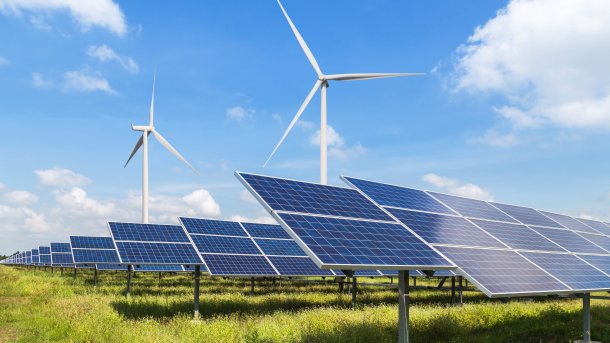De-globalisation: How the signs stand for a European solar industry
In our series on de-globalisation, we shed light on German and European dependencies on raw materials and supply chains.

(Bild: Soonthorn Wongsaita/Shutterstock.com)
(Hier finden Sie die deutsche Version des Beitrags)
A whopping four times as much solar power as today - that's what the German government wants to achieve by 2030. But where will all the solar cells come from? Probably not from Germany. Yet the local industry was once the world leader. At the beginning of the 2010s, the then black-yellow coalition starved it out with extremely reduced feed-in tariffs. Today, there are only a fifth as many jobs here as in 2011, and the market is now firmly in Chinese hands.
"It is naïve to believe that all you have to do in the West is snap your fingers and cheap goods will come from China forever and ever," says Gunter Erfurt, CEO of the Swiss solar module manufacturer Meyer Burger. "The Chinese solar industry is already extremely busy serving its own market. 50 percent of production will stay in the country this year."
Shenzhen, Yantian Port
(Bild: zhangyang13576997233 / Shutterstock.com)
The past months have painfully shown that dependence on resources comes at a high price. But can the wheel still be turned back? So let's take a look at the supply situation.
How far Europe could supply itself with strategically important raw materials and what that means for industry is what we want to explore with a raw materials article series.
- New Series: De-Globalisation - How Independent Can Europe Be? [Link auf Beitrag 3601923]
- De-globalisation: Can Europe supply itself with lithium?
- Rare earths and platinum group metals: Can Europe be self-sufficient?
- De-globalisation: Can Europe supply itself with steel and aluminium?
- De-globalisation: Can Europe supply itself with copper?
- Cobalt: Can Europe supply itself with the important raw material?
- De-globalisation: dependence on China remains despite new battery factories
According to his observation, the People's Republic is in the process of buying a "strategic future market". "There is a lot of investment despite much too low margins." In addition, "as a European company producing in Europe, we have to pay customs duties for all components that do not come from the EU due to a lack of suppliers. China, on the other hand, is allowed to import completely without barriers. That is not fair competition.
Solar industry: the supply chains in detail
How can Europe escape this dangerous dependency? The bad news: supply chains are long and complicated - and only as strong as their weakest link. The good news: they already have some pretty strong links.
Let's start with the starting material silicon. It is almost available everywhere as a component of quartz sand, but it has to be processed into polysilicon. Wacker Chemie AG, based in Munich, is one of the market leaders. Together with manufacturers in Norway, enough polysilicon could be produced annually in Europe for 20 to 25 gigawatts of photovoltaic output, estimates expert Jochen Rentsch of the Fraunhofer Institute for Solar Energy Systems (ISE) in Freiburg. That would at least be enough to meet Germany's expansion targets.
In the next step, "ingots" are produced from the polysilicon - blocks or cylinders from which thin wafers are then sawn. Here, Europe is particularly bare. "Ninety-six per cent of the ingots and wafers come from China," says Rentsch. "Even the equipment suppliers for them have disappeared from Europe." The situation is not much better for cell production - that is, the doping and coating of the wafers.
What remains is the assembly of the cells into ready-to-assemble modules. "In Europe, there is a total production capacity of only eight gigawatts per year for this, and it is spread over many small production capacities," says Rentsch. That is not even enough for Germany's expansion plans.
Asian production on European know-how
A particular irony of history: a large part of Asian production is based on European machines and know-how, such as wire saws for cutting up ingots. How could this part of the value chain, of all things, now also disappear from Europe?
"We developed a wire saw in the 2000s that cost a million francs," explains Meyer-Burger boss Erfurt. "Later we were able to sell an improved saw with eight times the capacity for only 400,000 francs. So we made it possible to multiply productivity, but we didn't get paid for it accordingly. So we became victims of our own technological success."
(Bild: Source: Fraunhofer Institute for Solar Energy Systems (ISE), Current facts on photovoltaics in Germany, as of August 2022.)
He sees the cause for the decline of local solar manufacturers also, but not only, in political failure. "We equipment suppliers also had our share. We first equipped the German companies and then the Chinese. What came out was always the same solar module as a product. That makes it difficult for competition." Meyer Burger has drawn the consequence from this and no longer sells its equipment to third parties, but uses it exclusively itself to produce cells and modules. In this way, the know-how should no longer flow outside.